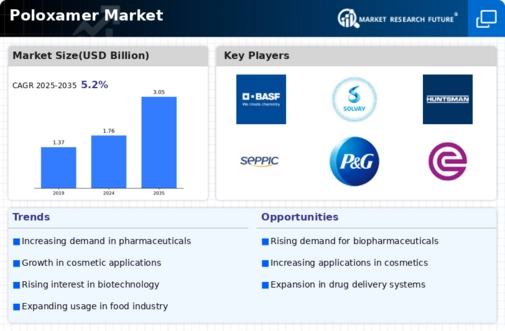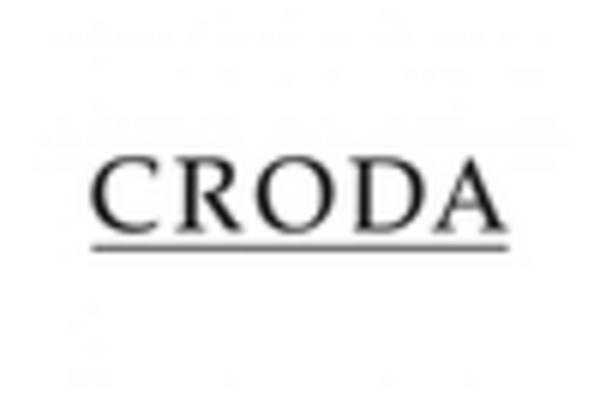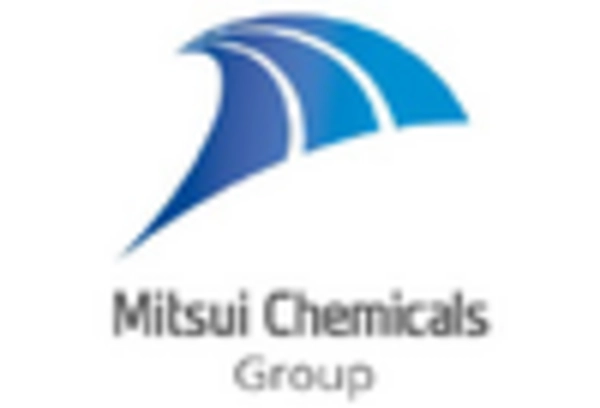Expansion in the Food Industry
The Poloxamer Market is also benefiting from its expanding applications in the food sector. Poloxamers are recognized for their emulsifying and stabilizing properties, making them valuable in food formulations. The global food industry is projected to grow steadily, with an estimated market value reaching over 8 trillion USD by 2026. This growth is likely to enhance the demand for Poloxamers, as manufacturers seek to improve product quality and shelf life. Additionally, the increasing consumer preference for processed and convenience foods may further bolster the use of Poloxamers in food applications. Consequently, the Poloxamer Market stands to gain from these evolving trends in food technology.
Increasing Applications in Biotechnology
The Poloxamer Market is experiencing a notable surge in demand due to its increasing applications in biotechnology. Poloxamers are utilized as surfactants and stabilizers in various biopharmaceutical formulations, enhancing drug solubility and bioavailability. The biotechnology sector is projected to grow at a compound annual growth rate (CAGR) of approximately 7.5% over the next five years, which could significantly drive the demand for Poloxamers. As biopharmaceutical companies seek to improve the efficacy of their products, the role of Poloxamers in formulation development becomes increasingly critical. This trend suggests that the Poloxamer Market may witness substantial growth as more companies adopt these versatile compounds in their processes.
Rising Demand in Cosmetics and Personal Care
The Poloxamer Market is witnessing a significant uptick in demand driven by the cosmetics and personal care sector. Poloxamers are widely used as emulsifiers and surfactants in various cosmetic formulations, contributing to product stability and texture. The Poloxamer is anticipated to reach approximately 400 billion USD by 2025, indicating a robust growth trajectory. This expansion is likely to propel the demand for Poloxamers, as manufacturers increasingly incorporate these compounds to enhance product performance. Furthermore, the trend towards natural and organic cosmetics may also influence the formulation strategies, potentially increasing the reliance on Poloxamers for achieving desired product characteristics. Thus, the Poloxamer Market is poised for growth in alignment with these trends.
Regulatory Support for Biocompatible Materials
The Poloxamer Market is benefiting from increasing regulatory support for biocompatible materials in various applications. Regulatory bodies are encouraging the use of safe and effective excipients in pharmaceutical and cosmetic formulations. This trend is particularly relevant as the demand for biocompatible and non-toxic materials continues to rise. The regulatory landscape is evolving, with guidelines being established to promote the use of Poloxamers in drug formulations and personal care products. As these regulations become more favorable, manufacturers are likely to increase their adoption of Poloxamers, thereby driving growth in the Poloxamer Market. This supportive environment may lead to enhanced product innovation and market expansion.
Technological Advancements in Formulation Science
The Poloxamer Market is significantly influenced by ongoing technological advancements in formulation science. Innovations in drug delivery systems, such as nanotechnology and targeted therapies, are creating new opportunities for Poloxamers. These compounds are increasingly being integrated into advanced formulations, enhancing drug stability and release profiles. The pharmaceutical industry is expected to invest heavily in research and development, with expenditures projected to exceed 200 billion USD annually. This investment is likely to foster the development of novel formulations utilizing Poloxamers, thereby driving their demand. As formulation technologies evolve, the Poloxamer Market may experience substantial growth, reflecting the changing landscape of drug development.

















Leave a Comment